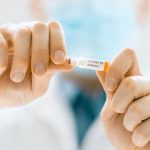In the sphere of competitive rowing, the quest for peak performance is an unremitting one. Rowers are always on the lookout for cutting-edge techniques and training methods to better their performance, enhance their aerobic capacity, and drive their rowing power to new heights. As we delve into this topic, we will explore the most effective training methodologies to increase aerobic capacity, the role of strength in rowing, lactate endurance, and the influence of training intensity on rowers’ performance.
Efficacy of Training Techniques for Aerobic Capacity
This section delves into the training strategies that are central to increasing aerobic capacity in rowers. Aerobic capacity, or VO2 max, is a critical determinant of endurance and overall rowing performance.
En parallèle : What’s the Impact of Social Media on the Mental Health of Young Athletes?
High-intensity Interval Training (HIIT)
In the realm of athletic training, High-Intensity Interval Training (HIIT) has gained considerable recognition and acceptance for its effectiveness in bolstering aerobic capacity. Studies available on PubMed and Scholar have shown that HIIT, which involves bursts of high-intensity exercise interspersed with periods of light exercise or rest, can significantly improve VO2 max in athletes, including rowers.
Steady-State Training
While HIIT is potent, it is by no means the only training method that can heighten aerobic capacity. Steady-state training, which involves maintaining a moderate intensity over an extended time, also plays a crucial role. While it may not increase VO2 max to the same extent as HIIT, steady-state training increases the body’s efficiency at utilizing oxygen and aids in recovery, thereby improving overall performance.
A découvrir également : How Can Smart Insoles Aid in the Prevention of Running Injuries?
The Integral Role of Strength Training
Strength is an indispensable component of a rower’s performance. According to data from CrossRef and DOI, strength training can enhance not only power but also aerobic capacity.
Resistance Training
Resistance training helps to improve the force that rowers can apply during each stroke, leading to a quicker pace over the duration of a race. Moreover, strength gained from resistance training can boost the efficiency of aerobic energy systems. As such, incorporating resistance training into a rower’s routine is a surefire strategy to amplify their aerobic capacity.
Core Strength
The core muscles are fundamentally involved in the rowing motion. Strengthening these muscles enables rowers to maintain proper form during the rowing stroke, reducing the risk of injury and increasing stroke efficiency. Core strength also contributes to greater power and endurance, indirectly enhancing aerobic capacity.
Understanding the Role of Lactate Endurance
Lactate endurance is another factor that can significantly impact a rower’s aerobic capacity and overall performance. It involves the body’s ability to endure high levels of lactate, a byproduct of intense exercise.
Lactate Threshold Training
Training the body to tolerate higher levels of lactate allows rowers to maintain a high intensity for longer periods without fatigue. Lactate threshold training involves exercises that induce high lactate production, such as intervals at or just below the athlete’s maximum sustainable power output.
Lactate Buffering
The body’s ability to buffer lactate and delay the onset of fatigue can be improved through specific training. This sort of exercise involves periods of high-intensity work followed by sufficient recovery. Over time, this type of training can increase the body’s lactate buffering capacity, allowing rowers to sustain a high intensity for longer periods.
Influence of Training Intensity on Performance
The relationship between training intensity and rowing performance is a complex one. Both low-intensity, long-duration training and high-intensity, short-duration training have roles to play in enhancing aerobic capacity and overall performance.
Low-intensity, Long-duration Training
Commonly known as "long slow distance" (LSD) training, this form of exercise is a staple in many rowers’ training regimes. LSD training benefits aerobic capacity by improving the efficiency of the cardiovascular system and increasing the body’s ability to utilize fat as fuel. It also aids in recovery between higher-intensity sessions.
High-intensity, Short-duration Training
While LSD training lays the foundation for aerobic capacity, high-intensity, short-duration training helps to push VO2 max to its limits. This type of training promises significant improvements in aerobic power and rowing performance. However, due to its demanding nature, it must be used judiciously within a training regime to prevent overtraining and promote optimal performance.
In the pursuit of peak performance, the understanding and application of these training techniques and principles can equip rowers with the necessary tools to maximize their aerobic capacity. With a strategic blend of high-intensity, strength, endurance, lactate and low-intensity training, rowers can continually push the boundaries of their performance and achieve their rowing goals.
The Impact of Nutrition and Hydration on Aerobic Capacity
The role of proper nutrition and hydration in boosting aerobic capacity cannot be overstated. A well-balanced diet and adequate hydration can significantly enhance a rower’s performance, energy levels, recovery, and overall health.
Nutrition
A rower’s diet must ideally be rich in carbohydrates, moderate in protein, and low in fat. Carbohydrates are the primary source of energy during high-intensity workouts and competitions. They are stored as glycogen in the muscles and liver, providing the energy required for rowing. Consuming adequate protein is also crucial as it aids in muscle recovery and growth. Fats, while necessary for overall health, should be consumed in moderation as they are not readily available energy sources during high-intensity exercise.
Hydration
Staying hydrated is essential for peak performance in any sport, including rowing. Water helps regulate body temperature, lubricates joints, and transports nutrients for energy and health. Dehydration can lead to fatigue, reduced coordination, muscle cramping, and overall decreased performance. According to studies available on PubMed and CrossRef, athletes should aim to start exercise well-hydrated and replace fluid losses post-exercise.
The Crucial Role of Rest and Recovery
Rest and recovery are vital components of an effective training program. Adequate rest helps to prevent overtraining, reduce the risk of injuries, and improve overall performance.
Active Recovery
Active recovery involves engaging in low-intensity exercise following high-intensity training sessions. It helps to cool down the body, reduce lactic acid buildup, and speed up the recovery process. Examples of active recovery include light rowing, cycling, or jogging.
Passive Recovery
Passive recovery, on the other hand, involves complete rest with no exercise. During this period, the body undergoes tissue repair and strengthens itself between workouts. Sleep is the most effective form of passive recovery. A good night’s sleep can help improve mental health, hormonal balance, and muscular recovery.
In conclusion, maximizing aerobic capacity in competitive rowers involves a combination of effective training techniques, strength training, lactate endurance, appropriate nutrition and hydration, and sufficient rest and recovery. The key lies in balancing these elements strategically to enhance performance while preventing overtraining and injury. As Google Scholar and DOI PubMed studies suggest, a well-rounded approach that includes high-intensity interval training, steady-state training, resistance and core strength training, lactate threshold and buffering training, low-intensity long-duration training, and high-intensity short-duration training, alongside optimal nutrition, hydration, and recovery strategies, can significantly boost a rower’s aerobic capacity and overall rowing performance.






